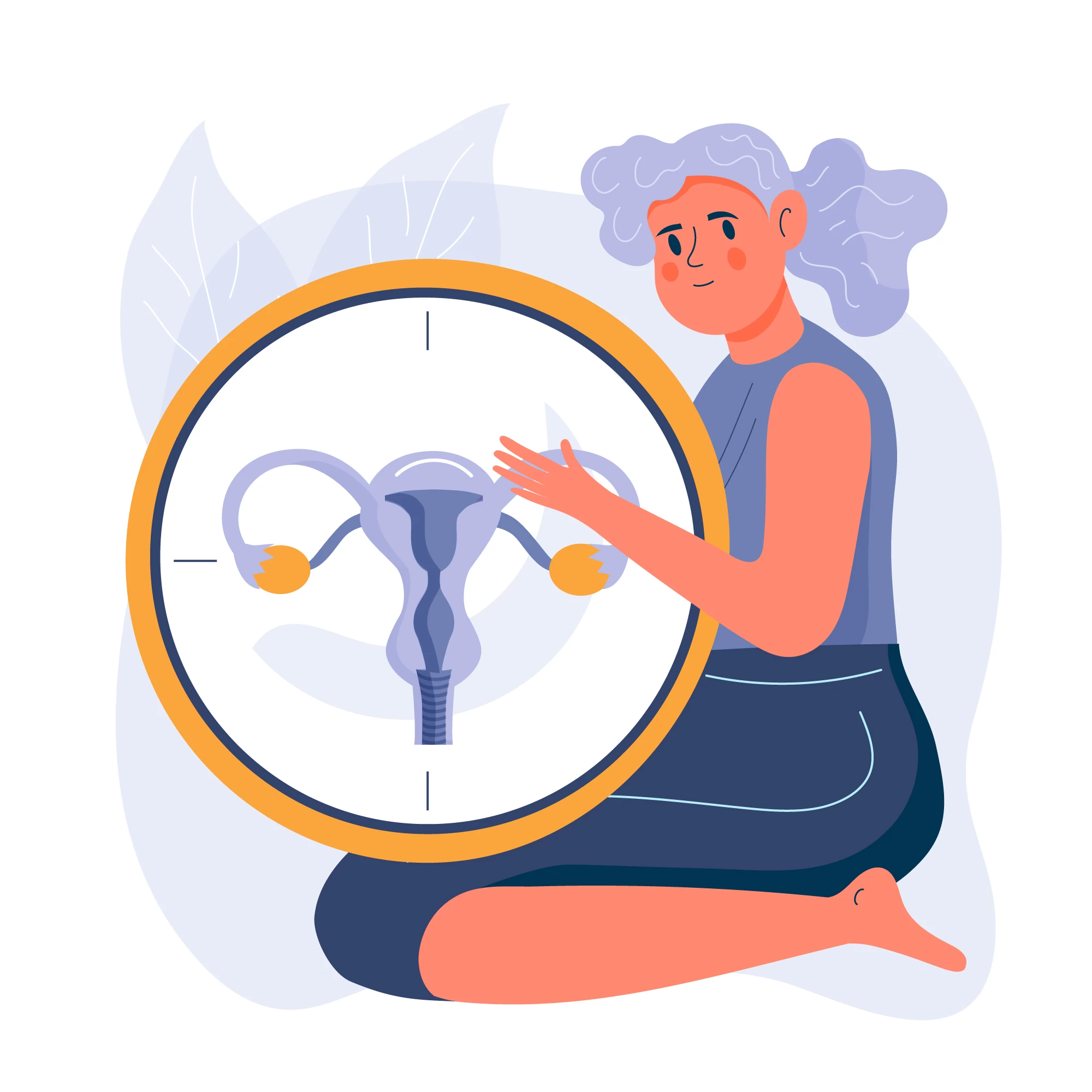
Uterine Prolapse
- Uterine Prolapse
- What is Uterine Prolapse?
- How Many Types of Uterine Prolapse Are There?
- What Are the Symptoms of Uterine Prolapse?
- How is Uterine Prolapse Diagnosed?
- What Are the Treatment Methods for Uterine Prolapse?
What is Uterine Prolapse?
Uterine prolapse is a condition characterized by the displacement or downward sagging of the uterus from its normal position. The uterus is supported by pelvic floor muscles, connective tissues, and supportive structures. However, in some cases, this support structure can weaken or become damaged, leading to the displacement or downward sagging of the uterus.
How Many Types of Uterine Prolapse Are There?
Uterine prolapse can be classified into different types. Here are a few examples of commonly recognized types of uterine prolapse:
- Anterior prolapse: The uterus sags towards the bladder. In this case, the uterus displaces downward along the front wall of the vagina.
- Posterior prolapse: The uterus sags towards the rectum. In this case, the uterus displaces downward along the back wall of the vagina.
- Apical prolapse: The uterus sags from the upper part of the vagina. In this case, the uterus displaces downward due to the weakening of the supporting tissues at the top of the vagina.
- Complete prolapse: The uterus protrudes outside the vagina entirely. In this case, the uterus comes out through the vaginal opening.
These are just a few examples, and the condition of uterine prolapse can be complex, with combinations of different types also being observed. Uterine prolapse is a condition evaluated and classified by gynecologists. This classification helps determine the degree of uterine prolapse and the approach to treatment.
What Are the Symptoms of Uterine Prolapse?
Uterine prolapse occurs when the support of the pelvic organs weakens or becomes damaged. The symptoms of uterine prolapse can vary from person to person, and the severity of symptoms can also vary. Here are some common symptoms of uterine prolapse:
- Pelvic pressure or heaviness: Displacement of the uterus and other pelvic organs can cause a sensation of pressure or heaviness in the pelvic region of a woman.
- Sensation of vaginal sagging or protrusion: When the uterus or vagina shifts from its normal position, a sensation of vaginal sagging or protrusion may occur. This can manifest as downward sagging of the vagina.
- Discomfort during sexual intercourse: Women with uterine prolapse may experience pain or discomfort during sexual intercourse. This may be related to the displacement of pelvic organs.
- Urinary incontinence: Uterine prolapse can affect the bladder and urinary tract, leading to urinary incontinence issues in women. Urinary leakage can occur during coughing, sneezing, or physical activity.
- Constipation or difficulty urinating: Uterine prolapse can exert pressure on the intestines and bladder, resulting in problems such as constipation or difficulty urinating.
- Frequent urination: Uterine prolapse can affect the normal functioning of the bladder and create a frequent urge to urinate.
These symptoms are common manifestations that can occur with uterine prolapse. However, the symptoms can vary in each woman, with some experiencing mild symptoms while others may have more pronounced ones. A proper diagnosis and evaluation by a healthcare professional are necessary for accurate diagnosis and treatment.

How is Uterine Prolapse Diagnosed?
The diagnosis of uterine prolapse requires evaluation and examination by a gynecologist or obstetrician. Below are some methods used in the diagnosis of uterine prolapse:
- Medical history: The doctor inquires about the patient's symptoms and health history. This provides information about the duration, severity, relationship with activities, and other relevant factors of the symptoms.
- Physical examination: The gynecologist evaluates the symptoms and findings of uterine prolapse through a pelvic examination. The condition of the uterus, vagina, and pelvic floor is examined. During the vaginal examination, the degree, type, and severity of uterine and vaginal prolapse can be determined.
- Examination during coughing or straining: In some cases, the patient may be asked to cough or strain. This can make uterine prolapse more pronounced and support the evaluation.
- Urine tests: Additional tests, such as urine analysis or urodynamic tests, may be requested to assess urinary functions in patients experiencing straining or urinary incontinence symptoms during urination.
- Imaging tests: In rare cases, imaging tests such as ultrasound, magnetic resonance imaging (MRI), or cystoscopy may be requested to evaluate uterine prolapse. These tests provide a more detailed view of the condition of pelvic organs and supporting tissues.
These methods are commonly used for the diagnosis of uterine prolapse. The gynecologist combines these methods based on the severity of symptoms, the patient's condition, and clinical findings to make an accurate diagnosis. The diagnosis of uterine prolapse can vary depending on individual circumstances and requires evaluation by a specialized healthcare professional.
What Are the Treatment Methods for Uterine Prolapse?
The treatment methods for uterine prolapse can vary depending on the severity of symptoms, the patient's lifestyle, overall health condition, and preferences. Here are some commonly used treatment options for uterine prolapse:
- Pelvic floor exercises (Kegel exercises): Exercises performed to strengthen the pelvic floor muscles can help alleviate symptoms of uterine prolapse. These exercises strengthen the pelvic floor muscles, providing better support to the uterus and other pelvic organs.
- Vaginal support devices (pessaries): Vaginal support devices are used to correct and support the position of the uterus and other pelvic organs. These devices are inserted into the vagina and help prevent displacement of the uterus and other organs. Pessaries come in various types and sizes, tailored to individual needs.
- Estrogen therapy: Uterine prolapse in postmenopausal women is often associated with hormonal changes. Hormone replacement therapy or local estrogen applications can improve the health of vaginal tissues and alleviate symptoms of uterine prolapse.
- Surgical correction: If the symptoms are severe or other treatment methods are ineffective, surgical intervention may be necessary. Surgical options include vaginal support of the uterus (hysteropexy) or removal of the uterus (hysterectomy). These surgical procedures can reposition the uterus and pelvic organs appropriately and reduce symptoms. Surgical options are evaluated based on the patient's fertility plans, overall health condition, and the severity of symptoms.
Treatment options vary depending on the degree of uterine prolapse, severity of symptoms, and the patient's individual condition. The treatment plan is determined by the gynecologist according to the patient's needs and preferences. If you experience symptoms of uterine prolapse, it is important to consult with your gynecologist and evaluate appropriate treatment options.
Uterine prolapse is a condition that can affect the quality of life and may require treatment. Therefore, it is important for women experiencing symptoms of uterine prolapse to consult with their gynecologists and establish an appropriate evaluation and treatment plan.






